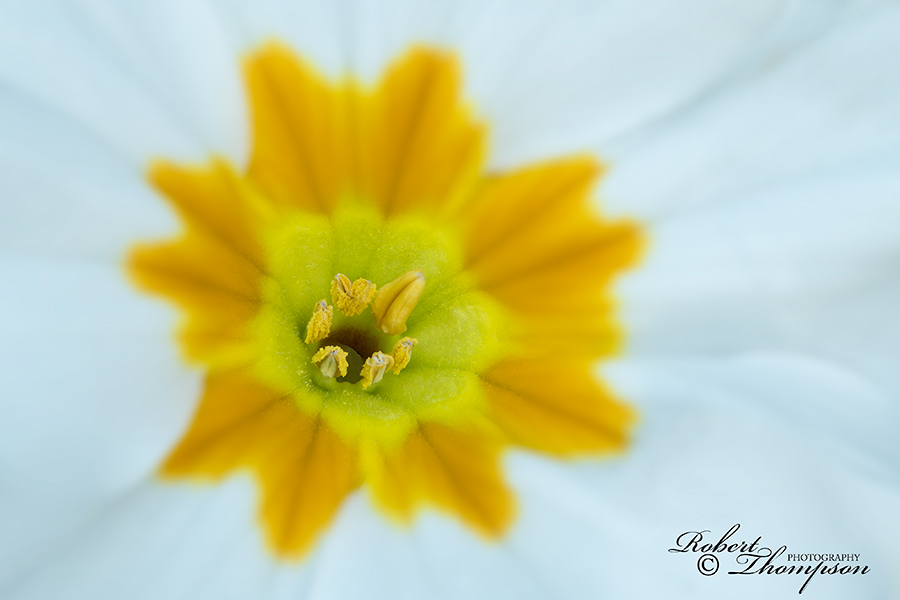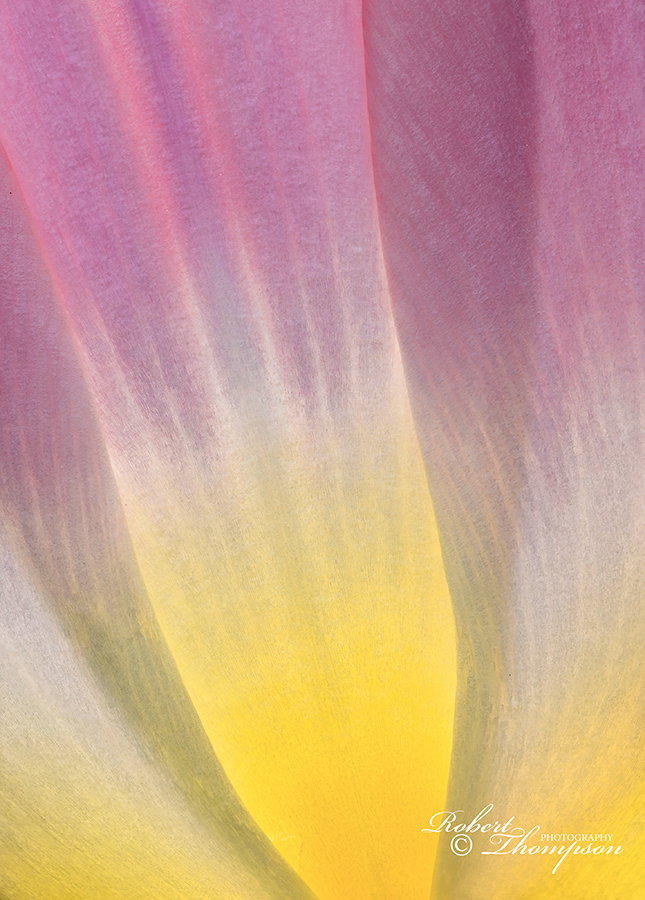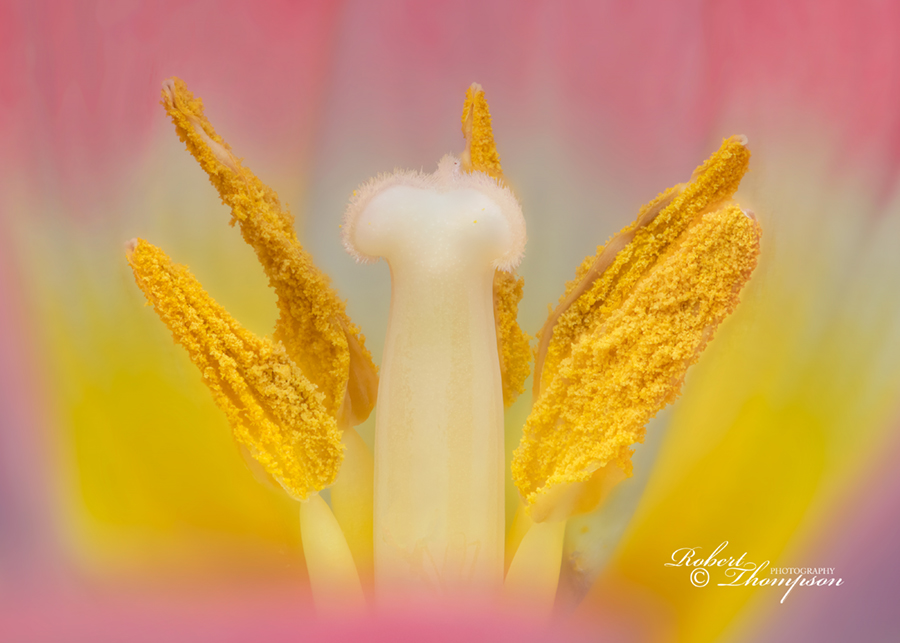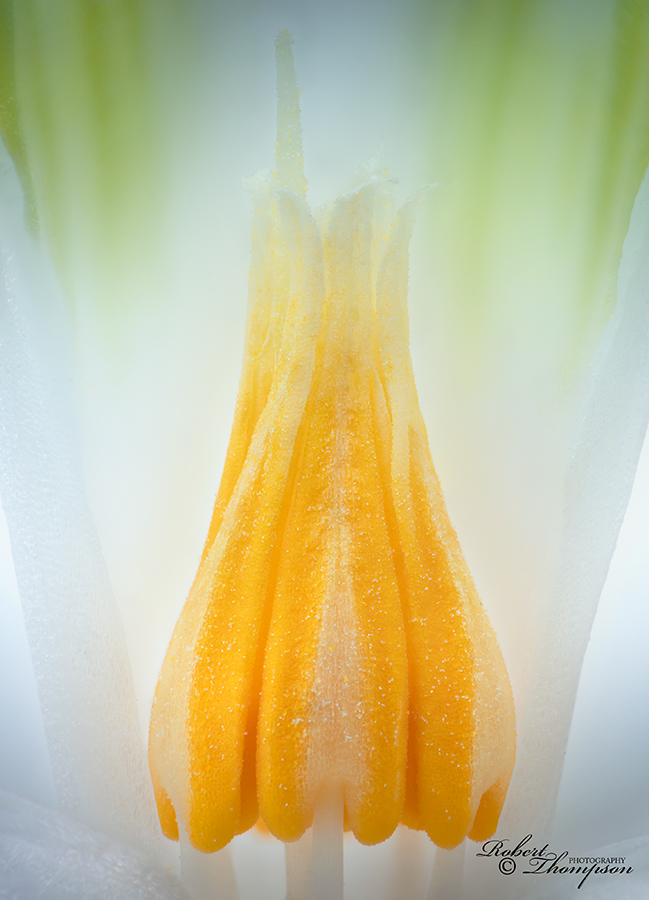Macro at Home

Winter Primrose Primula species
My point of interest on both the image above and below was the stamens which are quite small. Reproduction was well beyond lifesize.
Nikon D850, 105mm micro nikkor lens +1.7 converter, f/16, ISO 400, tripod + focusing rail.
In my previous blog, I was stressing the importance of keeping up your interest during the winter months. If you consider yourself as a seasonal photographer, then perhaps roaming about the coasts and woodlands in winter is not your style. If you are likely to be at home, then consider keeping your hand in by setting yourself projects. These can work in two ways, first keeping your motivation active, second refining techniques that are easily forgotten if you remain dormant until the following spring.
Flowers from local market stalls and garden centres are an excellent way to pass the winter months. They can provide endless hours of photography. Their diversity and colour help to improve not only your photographic skills, but also the creative process providing the opportunity to experiment with multiple compositions, abstracts, soft focus and isolation of component parts.

Winter Primrose Primula species
Nikon D850, 105mm micro nikkor lens +1.7 converter, f/16, ISO 400, tripod + focusing rail.
Photographing flowers is often seen by many as less challenging when compared to unpredictability of live material. As a natural history photographer, I have to cover many different subjects some are more demanding and challenging than others. I can assure you, in my opinion, serious flower photography is one of the most challenging aspects of macro photography. You can, of course, just take the traditional approach and produce a series of record shots lacking imagination and creativity. I have never found flowers easy if you want to make your imagery stand out it requires a lot more thought than merely framing a portrait and pushing the shutter. If you want some inspiration then have a look at the work of renowned flower photographers such as Kathleen Clemons kathleenclemonseducation.com or Anne Belmont www.annebelmontphotography.com Their interpretations transcend the normal approach practised by the masses.

Tulip Tulipa species
Tulips are always fascinating flowers to experiment with. Their diversity of colour provide lots of possibilities.
Nikon D850, 200mm micro nikkor lens, f/8, ISO 400, tripod.

Tulip Tulipa species
Nikon D850, 105mm micro nikkor lens +1.7 converter, f/16, ISO 400, tripod + focusing rail.
The weather has been challenging this week photographically, first of all with Storm Ciara followed by Storm Dennis. I picked up some winter Primulas for planting and spent a couple of hours instead, experimenting with the variety of colours. Needless to say, they didn’t get planted. I also managed to acquire a couple of tulips, and snowdrops to add a little diversity. Spring is looming so let’s hope the weather is kinder as we enter March!

Snowdrop Stamens Galanthus nivalis
The internal stamens of a Snowdrop flower are challenging. The stamens themselves are around 5mm-6mm long and extremely delicate. A more elaborate is required to achieve this result. Magnification is around 3.5 times lifesize. A focusing rail is essential for this type of work. I used a reversed enlarger lens coupled to the 105mm macro. The composite image was created from 80 stacked images to achieve sufficient depth of field.
Nikon D850, 105mm micro nikkor lens + reversed nikon 50mm enlarger lens, f/11, ISO 400, tripod + focusing rail.

